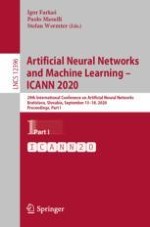2020 | OriginalPaper | Buchkapitel
SU-Net: An Efficient Encoder-Decoder Model of Federated Learning for Brain Tumor Segmentation
verfasst von : Liping Yi, Jinsong Zhang, Rui Zhang, Jiaqi Shi, Gang Wang, Xiaoguang Liu
Erschienen in: Artificial Neural Networks and Machine Learning – ICANN 2020
Aktivieren Sie unsere intelligente Suche, um passende Fachinhalte oder Patente zu finden.
Wählen Sie Textabschnitte aus um mit Künstlicher Intelligenz passenden Patente zu finden. powered by
Markieren Sie Textabschnitte, um KI-gestützt weitere passende Inhalte zu finden. powered by
